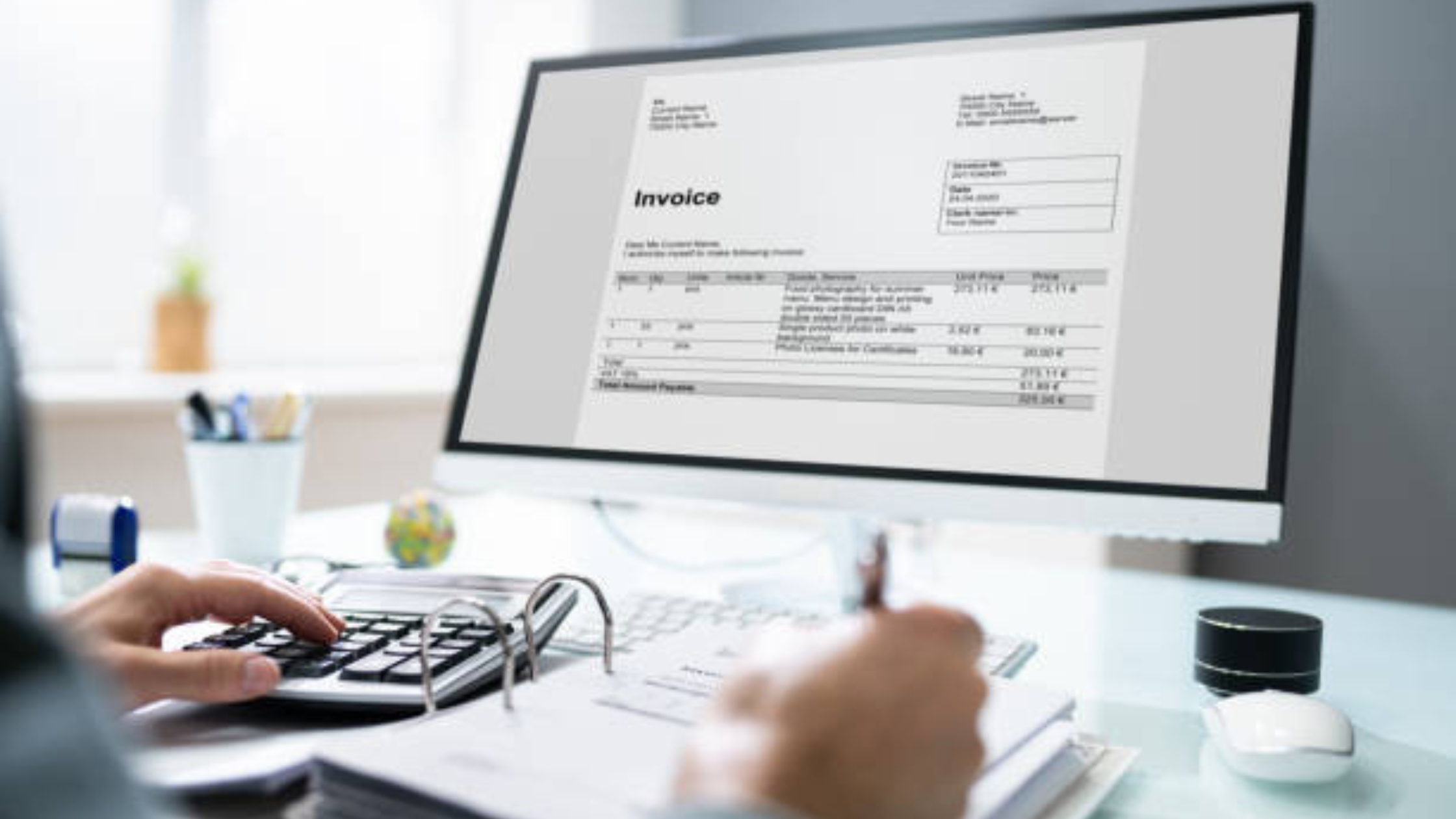Efficient Ways to Create Internet Bill Receipts

The ability to swiftly generate accurate and organized receipts for online services has become a fundamental aspect of financial management. From small businesses to freelancers to households, having a reliable system in place for producing internet bill receipts is essential for smooth financial transactions and tracking expenses.
This introduction will delve into a range of strategies and tools that can be harnessed to create these receipts effectively. By exploring automated solutions and customizable templates, we aim to uncover the most efficient practices for producing professional and detailed receipts tailored to individual needs. By implementing these streamlined methods, you can significantly enhance your financial management capabilities and boost productivity. Join us as we explore the best approaches to simplify the receipt generation process and optimize your billing procedures.
Efficient Ways to Create Internet Bill Receipts
When it comes to managing finances and maintaining a seamless billing process, businesses strive to adopt practices that not only save time but also enhance accuracy. One crucial aspect of this process is the creation of internet bill receipts, which play a significant role in documenting transactions and providing customers with detailed records of their purchases. Leveraging online templates and tools for generating these receipts has become increasingly popular due to the numerous benefits they offer.
Utilizing online templates and tools streamlines the receipt creation process, allowing businesses to automate the generation of accurate and professional-looking receipts. By incorporating customization features into these templates, companies can ensure that each receipt aligns with their branding guidelines, fostering brand recognition and a sense of professionalism. Customization options may include adding company logos, adjusting color schemes, and including specific contact information to personalize the receipts.
Furthermore, providing clear and comprehensive guidelines within the templates is essential to assist users in accurately completing the receipt details. These guidelines should cover essential information such as billing dates, transaction descriptions, pricing details, and payment methods accepted. By offering a user-friendly interface and intuitive design, businesses can streamline the data entry process and reduce the likelihood of errors.
In addition to accuracy, the visual appeal of internet bill receipts plays a crucial role in enhancing the overall customer experience. Prioritizing legibility and readability in the design ensures that the information presented is easily understood by customers, promoting transparency and trust. Including digital delivery options, such as sending receipts in PDF format via email, enhances convenience for both businesses and customers, reducing paper waste and ensuring timely delivery.
By focusing on convenience, customization, and professionalism in the creation of internet bill receipts, businesses can not only streamline their billing processes but also strengthen their brand image and customer relationships. These optimized receipts serve as a representation of the company's commitment to efficiency, quality service, and customer satisfaction.
To further enhance the effectiveness of internet bill receipts, businesses can consider incorporating electronic signature capabilities. This feature adds a layer of security and authenticity to the receipts, especially for transactions that require validation. Electronic signatures ensure that the receipt is legally binding and provides an additional level of assurance to both parties involved.
Moreover, integrating automated receipt tracking systems can offer businesses insights into customer behavior and preferences. By analyzing the data collected through these systems, companies can identify trends, track payment histories, and personalize future interactions with customers. This data-driven approach not only improves operational efficiency but also contributes to building stronger customer relationships based on personalized experiences.
The efficient creation of internet bill receipts is essential for businesses looking to modernize their billing processes and enhance customer satisfaction. By leveraging online tools, customization features, digital delivery options, electronic signatures, and automated tracking systems, companies can streamline their operations, build brand loyalty, and foster long-term relationships with their customers.
Best Practices for Internet Bill Receipts
Accuracy and Clarity in Information:
- Ensuring that all relevant details such as billing period, amount due, and payment methods are clearly presented on the receipt. This transparency helps in avoiding confusion and ensures that customers understand their bills clearly.
Secure Handling of Customer Data:
- Implementing robust security measures to protect sensitive customer information, such as encryption protocols and secure storage systems. It is crucial to safeguard customer data from potential cyber threats and unauthorized access, instilling trust in the service provider.
Providing Contact Information for Support:
- Including easily accessible contact details for customer support to address any queries or concerns regarding the bill receipt. Offering responsive customer service enhances the overall customer experience and fosters a positive relationship between the company and its clients.
Data Privacy Compliance:
- Adhering to data privacy regulations and industry standards to safeguard customer information. Compliance with laws such as GDPR or CCPA showcases a commitment to protecting customer privacy and can prevent legal issues.
Paperless Options:
- Encouraging customers to opt for paperless billing options to reduce environmental impact. Providing incentives for paperless billing can promote sustainability and streamline the billing process for both parties.
Digital Security Awareness:
- Educating customers on best practices for maintaining digital security, such as avoiding phishing scams and regularly updating passwords. Enhancing customer awareness can mitigate security risks and protect both the customer and service provider.
Personalized Billing Solutions:
- Offering personalized billing solutions based on customer preferences and usage patterns. Tailoring billing formats or payment options can cater to individual needs and enhance customer satisfaction.
Continuous Improvement:
- Regularly reviewing and updating billing processes to incorporate feedback and enhance efficiency. Continuous improvement ensures that billing practices remain current and responsive to evolving customer needs and industry trends.
Innovative Technologies in Billing:
- Exploring the integration of innovative technologies like AI and machine learning in billing systems to automate processes, improve accuracy, and provide personalized recommendations to customers. Adopting cutting-edge technologies can enhance the efficiency of billing operations and deliver a seamless customer experience.
Enhanced Communication Channels:
- Leveraging multiple communication channels such as email, SMS, and mobile apps to deliver bill receipts promptly and allow customers to access their billing information conveniently. Providing diverse communication options ensures that customers can choose their preferred mode of interaction, enhancing satisfaction and engagement.
Transparency in Fee Structure:
- Clearly outlining all fees and charges included in the bill receipt, including any additional services or surcharges. Transparent fee structures build trust with customers, preventing disputes and fostering a positive perception of the service provider.
Community Engagement Initiatives:
- Engaging in community-focused initiatives related to billing practices, such as conducting workshops on financial literacy or collaborating with local organizations for bill payment assistance programs. Community engagement not only promotes a positive brand image but also demonstrates a commitment to supporting customers beyond the billing process.
Environmental Sustainability Efforts:
- Implementing eco-friendly practices in billing operations, such as using recycled paper for physical receipts or partnering with environmental organizations for carbon offset programs. Demonstrating a commitment to environmental sustainability aligns with customer values and contributes to a greener future.
Customer Feedback Mechanisms:
- Establishing feedback mechanisms to gather insights from customers regarding their billing experience and preferences. Actively soliciting and acting upon customer feedback demonstrates a customer-centric approach and allows for continuous refinement of billing practices to better meet customer needs.
Educational Resources for Customers:
- Providing educational resources or guides on understanding bill statements, managing expenses, and maximizing cost savings. Empowering customers with knowledge fosters financial literacy and helps them make informed decisions regarding their billing and payment activities.
Seamless Integration with Payment Platforms:
- Ensuring seamless integration with popular payment platforms and digital wallets to offer customers diverse payment options and streamline the payment process. Providing convenient and secure payment methods enhances the overall billing experience and reduces barriers to timely payments.
Cross-Functional Collaboration:
- Facilitating collaboration between billing departments and other organizational functions such as customer service, marketing, and IT to align billing strategies with broader business goals. Cross-functional collaboration promotes synergy across departments and ensures a cohesive approach to customer service and satisfaction.
Tips for Organizing and Storing Internet Bill Receipts
Leveraging Digital Storage Solutions
Effectively organizing and storing internet bill receipts is essential for financial management. Embracing digital storage solutions not only ensures convenience but also enhances security and accessibility. Explore various cloud storage options such as Google Drive, Dropbox, or OneDrive to securely store soft copies of your receipts. These platforms offer the flexibility to access your receipts anytime, anywhere, from any device. Consider utilizing dedicated receipt management apps like Evernote or Shoeboxed for a more streamlined and automated approach to receipt organization.
Implementing an Efficient Organizational System
Creating a well-structured organizational system for your internet bill receipts is key to simplifying your financial record-keeping process. Establish a systematic filing method based on factors like date, vendor, or payment method to facilitate quick and efficient retrieval of receipts. Utilize digital folders, subfolders, and labels to categorize receipts systematically. Regularly update and maintain your filing system to ensure that it remains organized and clutter-free, making it easier to track and manage your expenses.
Enhancing Backup and Security Practices
Safeguarding your internet bill receipts through robust backup and security measures is crucial to protecting sensitive financial information. Strengthen the security of your digital storage accounts by enabling two-factor authentication and regularly updating your login credentials. Consider encrypting confidential receipt details before uploading them to the cloud to prevent unauthorized access. Implement automated backup processes to create redundant copies of your receipts and guard against data loss due to unforeseen circumstances. Conduct periodic security audits to identify and address any potential vulnerabilities in your storage system.
Regular Maintenance and Review
Maintaining an organized system for storing internet bill receipts is an ongoing process that requires regular attention. Periodically review your stored receipts to ensure accuracy and completeness. Delete any outdated or irrelevant receipts to declutter your storage space and improve overall efficiency. Stay proactive in managing your receipt storage system to stay on top of your financial records and maintain a clear overview of your expenses.
By following these tips and integrating modern digital tools into your receipt management practices, you can streamline the process of organizing and storing internet bill receipts effectively. Embrace the convenience of digital solutions to enhance the security, accessibility, and efficiency of managing your financial documentation.
Efficient Ways to Create Internet Bill Receipts
The creation of internet bill receipts has become an essential aspect of managing financial transactions for businesses. This blog post delves into efficient methods that businesses can adopt to streamline the process of creating internet bill receipts.
- Online Invoice Generators
- Accounting Software
Implementing digital tools such as online invoice generators and accounting software can greatly streamline the process of creating internet bill receipts. By automating the receipt generation process, businesses can:.
- Save time
- Reduce errors
- Improve overall efficiency in managing their billing documentation
Implementing digital tools such as online invoice generators and accounting software can greatly streamline the process of creating internet bill receipts. By automating the receipt generation process, businesses can save time, reduce errors, and improve overall efficiency in managing their billing documentation. Embracing technology and digital solutions not only enhances the customer experience but also helps businesses stay organized and financially responsible. By adopting these efficient methods, businesses can ensure accurate and timely internet bill receipts, contributing to a smoother financial operation overall.







